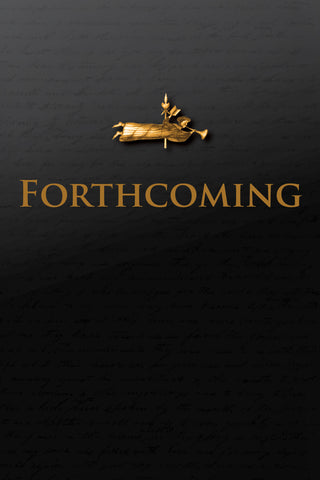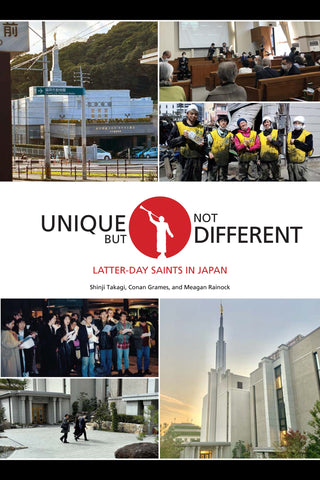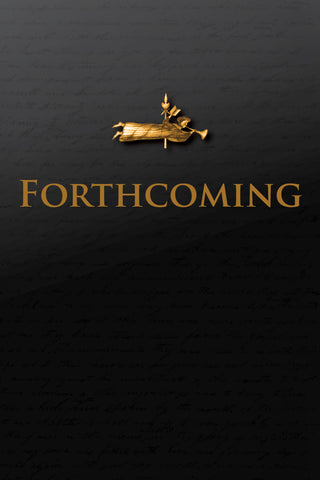Come Up Hither to Zion: William Marks and the Mormon Concept of Gathering
$32.95
by Cheryl L. Bruno and John S. Dinger
- “With exhaustive research and admirable attention to historical nuance, Bruno and Dinger show William Marks’s crucial role in Joseph Smith’s inner circle of leaders.” — David J. Howlett
- “A well-researched and engaging biography of William Marks, . . . one that every person in the Restoration Movement should read.” — Joe Geisner
- “Cheryl Bruno and John Dinger bring Marks to vivid life. . . . Gracefully written and painstakingly documented, . . . it is also an emotionally involving and moving book.” — Todd M. Compton



Available in ebook for Kindle, Apple, Google Play, and, Kobo.
Also available through Amazon.
Download a free sample preview.
Book Description:
Come Up Hither to Zion: William Marks and the Mormon Concept of Gathering delves deep into the life of William Marks, a devoted follower of Joseph Smith and a key figure in the early history of the Latter Day Saint movement. Marks's journey from a descendant of Puritan settlers to a fervent convert to Mormonism is a fascinating exploration of faith, community, and the quest for spiritual truth. As Marks navigates the tumultuous landscape of early Mormonism, readers are taken on a gripping journey through pivotal moments such as the banking crisis in Kirtland, the expulsion of Saints from Missouri, and the clandestine practice of plural marriage. However, Marks's story goes beyond mere historical events; it is a testament to the enduring struggle to define one's place within a religious tradition while attempting to balance devotion to the faith, interpersonal relationships, and personal integrity.
After the death of Joseph Smith, Marks found himself at the center of a power struggle among various groups claiming succession. His interactions with Brigham Young, James Strang, and others illuminate the diverse interpretations of Mormon doctrine and the differing visions of what Zion should be. From his involvement in defining moments in Mormonism to his break with Young and eventual ordination to the First Presidency of the Reorganized Church, Marks's life encapsulates the challenges and complexities of early Latter Day Saint history. Through meticulous research and insightful analysis, Come Up Hither to Zion sheds light on the intricate tapestry of beliefs and practices that shaped Marks's spiritual journey and offers a compelling exploration of the Mormon concept of gathering as both a physical and philosophical endeavor.
Comprehensive Table of Contents:
.
Preface
Introduction: They Shall Be Gathered In
1. Ordained to Preside Over Kirtland
2. Missouri, the Land of My People
3. Commerce: Suited for the Saints
4. Nauvoo Municipality
5. The Ties that Bind
6. A Viper on the Wall
7. Succession and Shoulder-Rounding
8. James J. Strang: Claims and Clashes
9. Charles B. Thompson’s Gathering Committee
10. The Weary Wanderer
11. Reorganizing Zion
Conclusion: Quiet Cornerstone
Appendix A: William Marks—Letters
Appendix B: William Marks—Publications
Bibliography
Index
Q&A with the Author:
.
2. William Marks played a significant role in various pivotal moments within early Mormonism. Can you discuss some specific instances where Marks's leadership and decisions had a profound impact on the direction of the Latter Day Saint movement?
--Promoting Fairness: His representation of Sidney Rigdon during the succession crisis highlighted his commitment to integrity and due process.
--Organizing New Communities: His efforts in Voree, Beaver Island, and Preparation demonstrated his commitment to the physical and spiritual gathering of Saints.
--Shaping the Reorganized Church: His advocacy and participation in the ordination of Joseph Smith III influenced the church’s ability to maintain the lineage and teachings of the church’s founder. Additionally, Marks’s support of original teachings influenced the doctrines and identity of the RLDS.
William Marks's spiritual journey and vision for the Latter Day Saint community were profoundly shaped by his experiences with gathering to Zion and his conflicts with church leadership. As the stake president in Nauvoo, he played a crucial role in organizing the community and establishing a justice system. This included excommunicating those who were out of harmony with church teachings. Despite never being formally excommunicated, Marks was harassed and shunned by the church leadership after Joseph Smith’s death, which led him to leave Nauvoo. These experiences gave him a deep empathy for those marginalized within the church and fueled his advocacy for reform. This ultimately influenced his significant role in the Reorganized Church of Jesus Christ of Latter Day Saints, where he emphasized moral integrity, inclusivity, and a return to the original teachings of the Book of Mormon.
6. The early Mormons faced significant opposition and violence, especially in places like Jackson County, Missouri. How did these conflicts impact the gathering efforts, and what strategies did the church employ to overcome the challenges?
Praise for Come Up Hither to Zion:
“With exhaustive research and admirable attention to historical nuance, Bruno and Dinger show William Marks’s crucial role in Joseph Smith’s inner circle of leaders, as a businessman, an ecclesiastical judge, a city alderman, the Nauvoo stake high council president, and a loyal dissenter to the practice of polygamy. Through Marks’s biography, Bruno and Dinger also chart the paths of otherwise Mormonisms that did not plant themselves in the Salt Lake valley, but continued to grow on the verdant Midwest plains, long after other Latter Day Saints had left. In doing so, they give Marks the biography he has long deserved.” — David J. Howlett, author, Kirtland Temple: The Biography of a Shared Mormon Sacred Space
“Come Up Hither to Zion: William Marks and the Mormon Concept of Gathering is a well-researched and engaging biography of William Marks, a relatively unknown but crucial supporting Saint in the earlier decades of the Restoration. Often a heartbeat from the ‘throne,’ so to speak, Marks was a stabilizing presence and close confidante of Joseph Smith and his various successors. However, even with this closeness to multiple Restoration leaders, he has been marginally written about in Restoration Studies. Cheryl L. Bruno and John S. Dinger have corrected this lack of recognition by bringing together records and their expertise to give the reader a fulfilling biography, one that every person in the Restoration Movement should read.” — Joe Geisner, editor, Writing Mormon History: Historians and Their Books
“William Marks was possibly the highest-ranking Mormon at the time of Joseph Smith’s death, yet he has been somewhat forgotten by modern Latter-day Saints. Cheryl Bruno and John Dinger bring him to vivid life in a great revisionist biography. Reviled by the “Utah” Saints after Smith’s death, Marks is shown in Bruno and Dinger’s biography as a loyal follower of Smith, and in fact, more a follower than a charismatic leader throughout his life. This book, gracefully written and painstakingly documented, is a continuously fascinating portrait of Marks. It is also an emotionally involving and moving book, as Marks experienced depths of rejection after Smith’s death, but then finally became an important leader in the Reorganized Church.” — Todd M. Compton, author, A Frontier Life: Jacob Hamblin, Explorer and Indian Missionary
“An enlightening biography that brings attention to a significant yet often overlooked figure in the early Latter Day Saint movement. . . . Bruno and Dinger’s biography provides valuable insights into both William Marks’ life and the various schisms and movements within the Latter Day Saint movement following [Joseph] Smith’s death. . . . While direct sources from Marks are limited, the surviving letters from this period offer a rare glimpse into his reflections on these successor movements. The book also delves into Marks’ provocative claims about Joseph Smith’s practice of plural marriage, including that Smith told him he was repenting of the practice at the end of his life. The authors effectively contextualize these claims, noting that while Smith purportedly sought to end plural marriage, it remains uncertain whether this was a genuine attempt or a strategic maneuver to quell public opposition” — Chad Nielsen, Times and Seasons
About the Authors:

Cheryl L. Bruno has lived in fourteen of the United States and now resides in the magnificent Monterey Bay area of California. She is an independent researcher in Mormon studies and co-author of Method Infinite: Freemasonry and the Mormon Restoration (Greg Kofford Books, 2022), and the editor of Secret Covenants: New Insights on Early Mormon Polygamy (Signature Books, 2024). Her wide interests have led her to publish scholarly articles, personal essays, poetry, and even a deck of Mormon-themed tarot cards. Cheryl has raised eight children and reigns over twenty grandchildren. She is currently employed as Lifestyle Director in the Senior Living industry.

John S. Dinger is a graduate of the S. J. Quinney College of Law, University of Utah, Salt Lake City. In addition to a juris doctorate, he holds degrees in political science and history from the University of Utah. He has published in the Journal of Mormon History, John Whitmer Historical Association Journal, Idaho Law Review, and Utah Law Review. His book, The Nauvoo High Council and City Council Minutes, won the Best Documentary Book Award from the Mormon History Association and the Best Book Award from the John Whitmer Historical Association. He is an attorney in Boise, Idaho.
More Information:
324 pages
ISBN: 978-1-58958-802-8









Share this item: